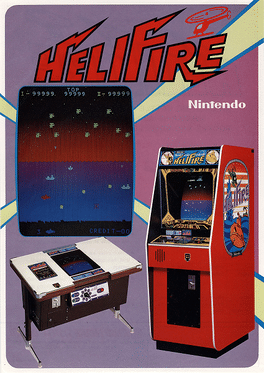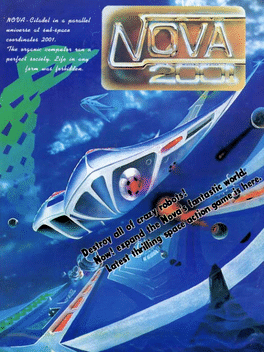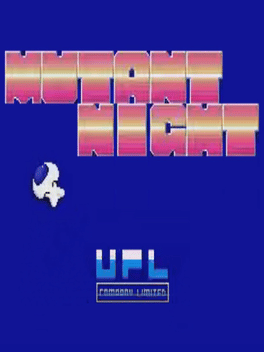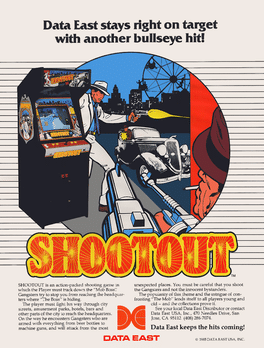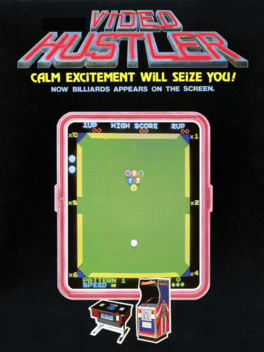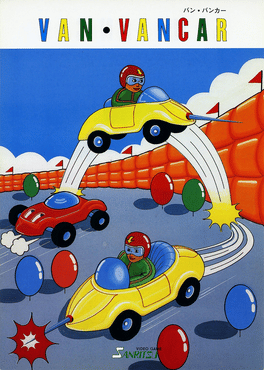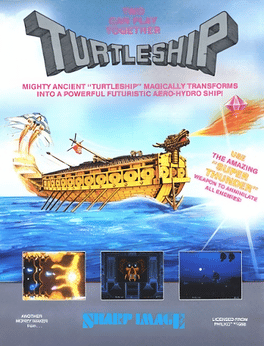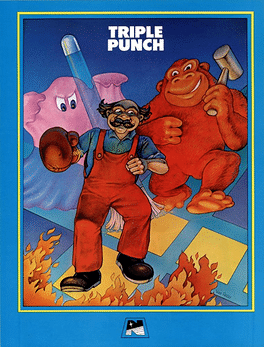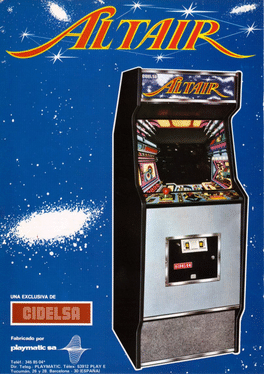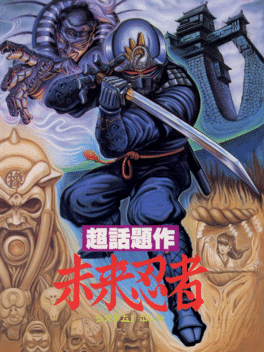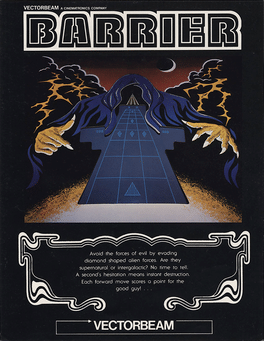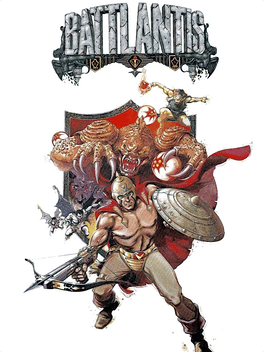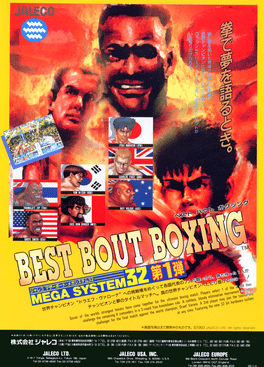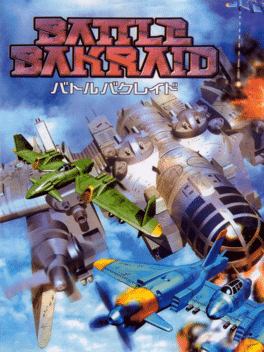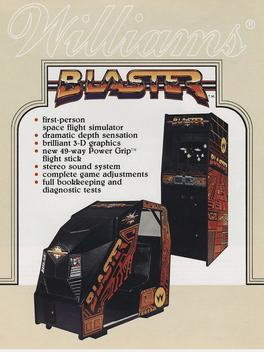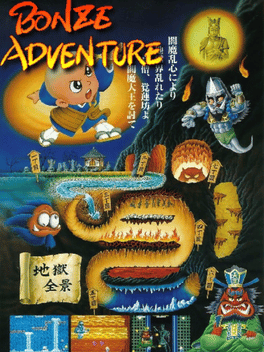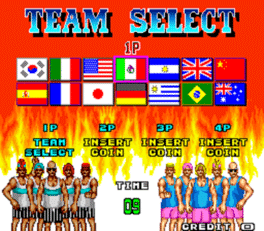Most Popular Arcade Games - Page 140
-
Heli Fire
1980
Heli Fire
1980
HeliFire is a Nintendo developed and published arcade video game released in America and Japan in 1980. The game gives you the unfortunate task of controlling a submarine that is under fire by a host of helicopters and even marine wildlife. As the submarine, you must dodge the bombs that the helicopters drop as well as the sea creatures and shoot upwards at the oncoming onslaught of enemies, delivering your fire a little ahead of the helicopter so that it connects in time. Interestingly, a version of the game was planned for the Nintendo Entertainment System, though was for whatever reason canceled by Nintendo. The game was presented in both a standard cabinet form and as a tabletop title. -
Nova 2001
1983
-
Mutant Night
1987
Mutant Night
1987
Mutant Night is a shoot'em up game of the "run & gun" type : the players controls a walking character shooting at enemies while avoiding their attacks.[4] Unlike most run&gun games, Mutant Night has almost no platform part and the character's shooting power is very limited : short range and not multi-directional, the bubble are always shot in the direction the character is facing. The game is divided in various levels or acts and focuses on fast-paced action and memorization. The levels are very short and straightforward, with a level design relying only on enemies attack patterns and on the game's physics to challenge the player. Mutron-kun can walk left or right, shoot bubbles and jump, and hurries to reach a small trapdoor at the end of each level. The difficulty curve of the game increases significantly after the first level and can be somewhat unforgiving. Power ups are available in the form of small pink pods on the ground which when shot release a coloured orb into the air, which can do one of the followin -
Shoot Out
1985
Shoot Out
1985
Player controls with two buttons and an 8-way joystick. One button shoots the gun, the other allows the player to jump enemy bullets and other attacks. The 8-way joystick is used to specify the direction of movement, pointing down to crouch and the different up directions to indicate angle of the shot. At the start of the game, player must practice in the target practice room, then play through the next 7 stages to beat the game; however, the game will loop after the 7th stage is completed. In stages 1 thru 8, the object is to shoot a certain number of criminals and avoid shooting civilians. If the player is hit by an enemy or if the player shoots a civilian, the player will lose a life. When all lives are lost, the game ends. Besides criminals and civilians, some objects in the backgrounds of the seven stages can be shot to earn extra points, such as amusement park rides and signs. -
World Soccer Finals
1990
World Soccer Finals
1990
World Soccer Finals is a Coin-Operated Arcade Video Game produced by Leland in 1990. This game ranks a 1 on a scale out of 100 (100 = most often seen, 1=least common) in popularity based on census ownership records. Other machines made by Leland during the time period World Soccer Finals was produced include Pig Out, Ataxx, Brute Force, Danny Sullivan's Indy Heat, Dragon's Lair II, Ironman Ivan Stewart's Super Off Road, Ironman Ivan Stewart's Super Off Road Track Pak, All American Football, Viper, and Strike Zone Baseball. -
Wiping
1982
-
Video Hustler
1981
-
Van-Van Car
1983
Van-Van Car
1983
Van-Van Car is an arcade game that was released by Sanritsu, in 1983, and licensed to Karateco for EU manufacture and distribution; as with Dream Shopper and Dr. Micro, it runs on Namco's Pac-Man hardware (a Zilog Z80, running at 3.072 MHz), but with two Texas Instruments SN-76496s running at 1.78975 MHz for sound. The flyer may give the impression that it uses an isometric perspective but it uses the same overhead view as the first six Pac-Man titles - and, the player must use a 4-directional joystick to take control of a yellow racer car (the eponymous "Van-Van Car"), which is on a mission to burst balloons with its front-mounted spike while watching out for the three "killer" cars (which are red, green, and blue, so the last one looks somewhat like an evil version of the car from Namco's Rally-X). Each normal balloon burst will be worth 200 points, regardless of colour; also, if you press that "Jump Button", Van-Van Car will jump into the air, and every time it jumps over one of the killer cars, you will receiv -
Turtle Ship
1988
Turtle Ship
1988
The game is a typical space shooter that plays horizontally or vertically depending on the level. Three buttons per player: guns, missiles and special. Special is a super weapon which kills all but the most powerful enemies. -
Triple Punch
1982
Triple Punch
1982
A maze/outline game where you're the carpenter and your task is to complete the squares until you've filled the screen. Sound easy? Not when you hear what's trying to stop you. A gorrila, ghost, earser and burst of fire all wander the paths. The eraser erases uncompleted squares and the gorilla would love to hammer you. But you're not defenseless. With three swift punches you can knock them out, except for the fire which can't be stopped. Each level introduces a larger area to fill so keep moving! -
Altair
1981
Altair
1981
Altair is one of the first commercial Spanish games. Taking elements from Phoenix and Moon Cresta, the player controls a ship that can move across the screen, destroying enemy ships. The game is divided into stages and has one of the first final bosses in the history of shoot 'em ups. -
Mirai Ninja
1988
Mirai Ninja
1988
Mirai Ninja was based on a Japanese movie of the same name, also produced by Namco. Both the game and the movie were released the same year. The plot of the movie: A man's body and soul are stolen and used as part of a demon castle. What's left becomes Cyber Ninja. He teams up with the chi students whose cyber-earmuffs show matching red symbols. They fill their swords with ammunition, grab some neo-retro-cyber-antique guns and attack the demon robot expendable ninja squad. Each fight is won by whichever side uses more gratuitous special effects. They slay the Tron-like hover droids, who are destroyed in their shame. There's a showdown with a white-armored guy with dreadlocks, who is later reincarnated by the eclipse and a lot of multicolored lightning. After killing the make-up wearing effeminate spider person, the chi school fires a giant gun at the demon castle spider cyber robot. It blows up. -
Bang
1998
-
Barrier
1979
Barrier
1979
Barrier is a maze arcade game using vector graphics released by Vectorbeam in 1979. In this very basic game, players move a small triangle around on the grid, while attempting to avoid the diamonds that are also moving around on the grid. Reaching the end of the grid teleports the player back to the front of the grid to gain points. The game is played on a 3x9 grid that is displayed at angle to make it appear to be in 3-D. The game was sold to Vectorbeam by Cinematronics. -
Battlantis
1987
Battlantis
1987
A vertical shoot-em-up. Protect the castle by moving a bowman horizontally across the bottom of the screen, shooting upwards at the assorted fantasy warriors who are advancing in waves. The game includes boss waves and has nice music. -
Best Bout Boxing
1994
Best Bout Boxing
1994
Best Bout Boxing is a boxing arcade game released by Jaleco in 1994, where boxers have to compete for the fictional "1993 World Freeweight Championship" (no weight limitation). It was never released outside Japan. -
Battle Bakraid
1999
Battle Bakraid
1999
The capitalist nation of Randa has long had a history of excellence in the creation of aircraft, attracting the best of engineers in aerodynamics, artillery, and structuring from the world over. Once, even this interest had waned, until the creation of the air show Bakraid, in which the capabilities of the fighters could be demonstrated outside of simulations for all to see. Around the time of the seventh Bakraid, a nearby nation, Deneb, had attained an expansionist attitude, forcibly subjugating and annexing several of its neighbors with the assistance of the Shtarterra Security Council. Recently, Deneb has asked to participate in Bakraid. Randa's defense council, perfectly aware that this is just a pretext for Deneb to get its and the SSC's engines of war into Randan borders and more easily prosecute their war from there, give their blessing. However, the council secretly contacts the other Bakraid participants, offering even more prize money than normal if they will perform in a special version of Bakraid--genui -
Blaster
1983
Blaster
1983
The year is 2085 and the Robotrons have destroyed the human race. You escape in a stolen space shuttle. Your destination: Paradise. A remote outpost 20 million light years away. Does paradise exist? Can civilization be started again? These questions will be answered at the end of your journey. But first, you must BLAST... OR BE BLASTED! -
Bonze Adventure
1988
Bonze Adventure
1988
The player controls a Buddhist monk, Bonze Kackremboh. His weapons are Buddhist prayer beads, called "mala" beads, which can be powered up until they become almost as large as the player. The monk battles snakes, giant eyeballs, ghosts and other enemy creatures. -
Back Street Soccer
1996
Back Street Soccer
1996
A Korean street soccer game. One of 14 international teams can be selected. The game is played on the street with a 'street fighter' element to the soccer.
